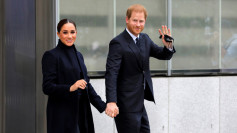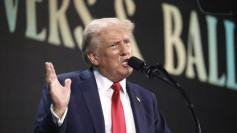Campaign rallies by President Donald Trump are COVID-19 superspreader events that have infected 30,000 people; led to the deaths of 700 others while massively increasing case numbers in most of the counties that hosted them.
Health experts have consistently slammed Trump for staging rallies where most participants show-up maskless and where social distancing is absent. New studies confirm the rallies have worsened coronavirus outbreaks in the counties that hosted them.
A new study by researchers at Stanford University estimates Trump's campaign rallies led to more than 30,000 confirmed COVID-19 cases. It studied 18 Trump rallies held between June 20 and Sept. 22 and analyzed COVID-19 data in the weeks after each event.
Researchers also compared the counties where the Trump rallies were held to counties with a similar trajectory of confirmed COVID-19 cases prior to the rally. Fifteen of the Trump rallies analyzed were indoors, which have lessened the chances for infections but didn't.
Researchers found the 18 rallies ultimately resulted in more than 30,000 confirmed cases of COVID-19. They also concluded the rallies likely led to more than 700 deaths among attendees and people they infected later on.
Researchers said their findings confirm the warnings and recommendations of public health officials about the high risk of COVID-19 transmission at campaign rallies and large group gatherings. The risk of widespread infections increases "particularly when the degree of compliance with guidelines concerning the use of masks and social distancing is low."
"The communities in which Trump rallies took place paid a high price in terms of disease and death," said B. Douglas Bernheim, chairman of Stanford's economics department and a lead author of the paper, which has yet to undergo peer review. The study was published in the open access preprint platform, SSRN.
The results of the Stanford study have much in common with a similar study conducted by CNN. A CNN study of 17 Trump campaign rallies found 14 of the host counties, or 82% of the total, saw a higher rate of new COVID-19 cases one month after the rally. The 17 rallies took place between August 17 and September 26.
The CNN study evaluated the rate of new daily cases per 100,000 residents four weeks before the rally, on the rally date, and four weeks after the rally at the county and state level.
Of the 14 counties that saw higher infection rates, eight had declining infection rates in the month before the Trump rally. The other six counties already had rising infection rates in the preceding month.
CNN's analysis also found the new rates of infection in 10 counties grew faster than the overall rate for the state.






